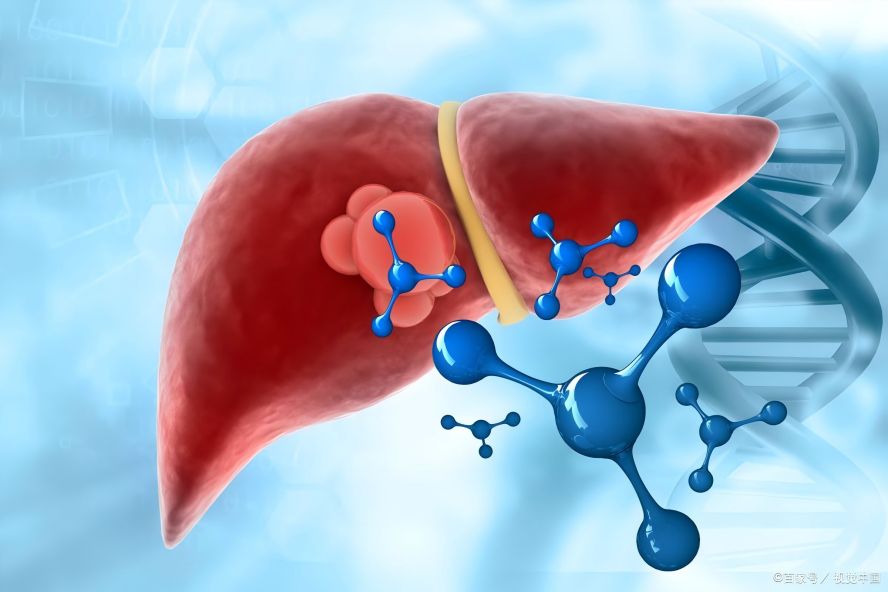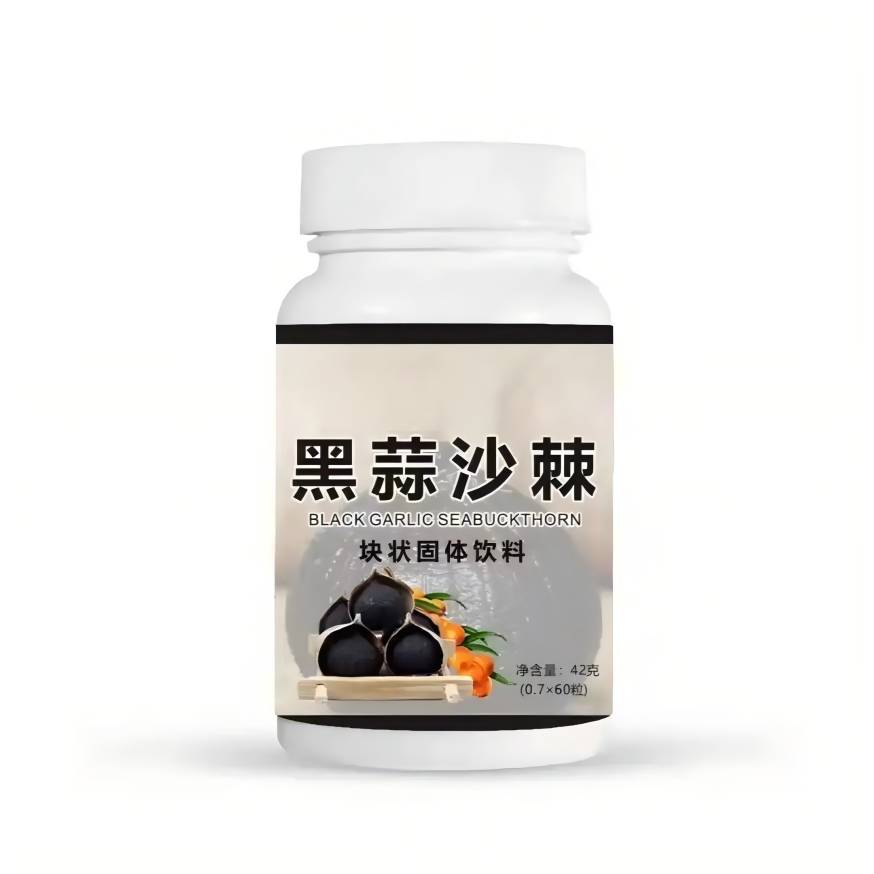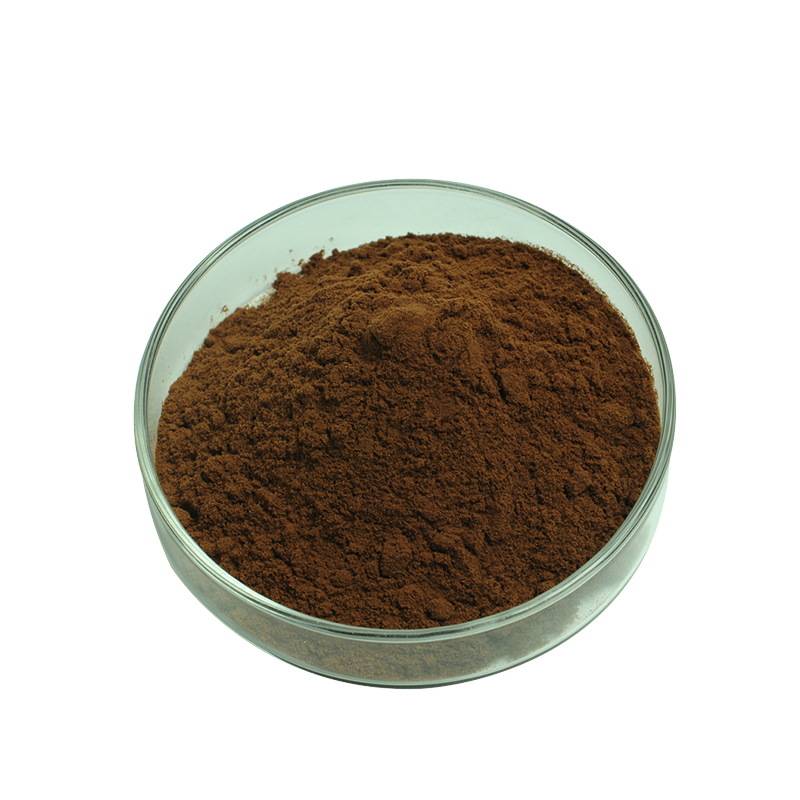Is Black Garlic Extract Beneficial for the Immune System?
Garlic (Allium sativum L.) is the underground bulb of an herbaceous plant in the family Liliaceae. It is widely used as a seasoning and functional food. In addition, due to its medicinal properties, garlic is used to treat a wide range of diseases, but its pungent and irritating odor limits the development and utilization of garlic products.
Black garlic is a product made by heat-processing the whole bulb of fresh garlic at a high temperature and under controlled humidity. During processing, oligosaccharides are converted to fructose, which not only increases the sweetness of black garlic, but also reduces the content of sulfur-containing compounds with a pungent odor, improving the flavor [1]. The biological activity is also enhanced due to the physicochemical changes caused by enzymatic hydrolysis and non-enzymatic browning reactions such as the Maillard reaction, caramelization, and the chemical oxidation of polyphenols during heat processing [2]. This paper describes the efficacy and mechanism of black garlic in terms of antioxidant and immune protection, providing useful information for the prevention and treatment of related diseases through dietary supplementation with black garlic and the development of black garlic functional foods.
1 Antioxidant
1.1 Antioxidant components
The main antioxidant components in black garlic are shown in Table 1.
1.1.1 Polyphenols
Polyphenolic compounds are widely found in fresh garlic and have the effect of scavenging free radicals. During the thermal processing of garlic, the cell structure is destroyed, and some of the polyphenols in the cytoplasm are released into the extracellular space. An increase in their content is the key to improving the antioxidant activity of garlic during thermal processing [3]. The type and content of polyphenols in fresh garlic vary greatly depending on the variety and growing conditions.
The main factors affecting the polyphenol content of black garlic include thermal processing conditions and different pretreatments [4-5]. After 35 days of heat treatment, the total phenol content of garlic first increased and then decreased over time [6]. After 16 days of treatment at a constant temperature of 65, 75, or 85 °C, the polyphenol content of black garlic increased with increasing temperature [7]. An appropriate high temperature allows polyphenols to accumulate rapidly in black garlic, which is related to the release of more phenolic hydroxyl groups during the degradation of macromolecular compounds during processing [8]. However, at the same temperature, lower relative humidity can promote the formation of polyphenolic compounds. In addition, KCl saturated solution soaking, cooking pretreatment and pectinase synergistic high-pressure pretreatment can increase the total phenolic content of black garlic to varying degrees, while freezing pretreatment and high-temperature and high-pressure pretreatment can reduce the total phenolic content, and microbial pretreatment has no significant effect on the accumulation of polyphenols [9-11].
Four phenolic compounds, namely caffeic acid, coumaric acid, gallic acid and epigallocatechin gallate, were identified in black garlic before in vitro digestion. After oral and gastrointestinal digestion, caffeic acid was the only remaining polyphenol, and the average bioavailability of phenolic substances in black garlic was 47.2% [12].
However, current research on black garlic polyphenols mainly focuses on free polyphenols, ignoring insoluble bound phenols, which greatly limits in-depth research on their antioxidant activity and the development of corresponding functional products. On the other hand, the organ distribution of phenolic compounds in black garlic and the regulatory effect of their metabolites on the antioxidant activity of tissues need to be further explored.
1.1.2 SAC and SAMC
γ-Glutamyl-S-allylcysteine is a characteristic compound of garlic. During heat treatment, it is converted by endogenous γ-glutamyl transpeptidase into water-soluble organic sulfides such as S-allyl-L-cysteine (SAC) and S-allylmercaptocysteine (SAMC), which can scavenge free radicals in the body and protect against oxidative damage induced by reactive oxygen species [13-14].
SAC and SAMC in black garlic show strong stability throughout the digestion process, and their bioavailability after in vitro gastrointestinal digestion reaches 36.5% and 106.4%, respectively.
It is worth noting that various transformations occur during the thermal processing of garlic to form different types of sulfur-containing compounds [15], but the characterization of novel sulfur-containing compounds with antioxidant activity and the mechanisms involved in the chemical and enzymatic reactions have yet to be elucidated.
1.1.3 Amadori and melanoidin
The glucose and amino acids in garlic are condensed by heating in the Maillard reaction to form a Schiff base, which undergoes Amadori rearrangement to form an Amadori compound (1-amino-1-deoxy-2-ketose). Within 90 days of thermal processing of garlic, the Amadori content first increased and then decreased, reaching a maximum on the 70th day [16-17]. A correlation analysis found that Amadori compounds such as the Amadori compound Fru-Arg, which is the Amadori compound of arginine and glucose, are significantly correlated with the ABTS and FRAP antioxidant activities and are an important source of the antioxidant activity of black garlic [18]. There have been many reports on Amadori compounds, but no reports on the antioxidant activity of the Heyns isomer, an Amadori compound formed when the reducing sugar is fructose during the initial stage of the Maillard reaction.
After the Amadori compound is produced, it will further react to form the final product of the Maillard reaction, melanoidin, which has metal ion chelating ability and antioxidant capacity that is positively correlated with molecular weight, and retains more than 60% of its antioxidant activity during in vitro simulated digestion [19]. Melanoidins in black garlic can be used as a focus for the future development of antioxidant functional foods. However, due to their complex structure, research is currently limited to melanoidins of different molecular weights, and there is limited knowledge of their composition, structure and stability.
1.1.4 Polysaccharides
Fructans and galactans are important polysaccharides in garlic. Infrared spectroscopy analysis shows that black garlic polysaccharides are pyranose linked by β-glycosidic bonds [20], but there are few reports on the structure-activity relationship between polysaccharide structure and antioxidant capacity. The in vivo antioxidant capacity of black garlic polysaccharides is related to the compositional properties and structure of the polysaccharides. After most polysaccharides enter the human body, they may undergo a variety of enzymatic and microbial actions, which can lead to the cleavage of glycosidic bonds, a decrease in molecular weight, and changes in spatial structure. Therefore, it is worth paying attention to the changes in the antioxidant activity of black garlic polysaccharides during digestion, which is accompanied by significant changes in these physicochemical properties.
1.1.5 Antioxidant enzymes
Garlic also contains various antioxidant enzymes such as POD, SOD and CAT, which play an important role in improving the functional activity of black garlic. Among them, POD has poor thermal stability and is basically inactivated after heat processing [21]. However, after natural fermentation at a relatively low temperature of 60–70°C for 40 days, the activities of SOD and CAT increased by 13 times and 10 times, respectively, compared to fresh garlic. When the processing temperature increased to 75 °C, SOD activity was significantly inhibited. Therefore, future research should fully consider the effects of different processing conditions on the changes in endogenous enzyme activity and antioxidant capacity during the Maillard reaction of garlic.
1.2 In vitro antioxidant capacity
ROS, as a marker of oxidative stress in cells, is a general term for oxygen-containing and reactive substances such as superoxide anions, hydroxyl radicals and hydrogen peroxide. In macrophages, black garlic significantly reduces ROS levels, and its ability to scavenge ABTS and DPPH radicals is 1.97 and 3.50 times that of garlic, respectively [22]. Adding 0.5% black garlic freeze-dried extract to pork cutlets significantly reduces lipid peroxidation and the volatile base nitrogen value of the cutlets, and has the effect of reducing the nitrite content in the jerky, indicating that black garlic can be used as a new type of antioxidant additive in the food preservation industry [23-24]. However, adding black garlic to the diet may affect the sensory quality of food. It is recommended that future research focus on exploring the impact of regulating key processing techniques on the multidimensional quality of black garlic, such as its antioxidant activity and flavor substances.
1.3 In vivo antioxidant capacity
1.3.1 Anti-aging
Aging and the formation of aging-related diseases are caused by the production of highly active free radicals in the body and an imbalance between the action of antioxidant enzymes to remove free radicals. After dietary intake of black garlic, not only can it significantly increase the activity of SOD and GSH-PX in the brain tissue of D-Gal-induced aging mice, but it can also increase the average lifespan of fruit flies by 9–10 days, indicating that black garlic can inhibit peroxidation in the body and delay the signs of aging. Therefore, black garlic can be regarded as a potential functional food for the prevention of age-related diseases [25]. As the world enters an aging society, continued exploration of the molecular mechanisms of black garlic on the activation of aging-related genes and protein signaling pathways, such as molecular docking studies of the interactions between different antioxidant active ingredients in black garlic and longevity target proteins such as IGF-1, can provide a new research basis and utilization basis for the further development and utilization of black garlic.

1.3.2 Improve cognition
Learning and memory impairment is a transitional state between normal aging and Alzheimer's disease, and its main pathological feature is the loss of information acquisition and reproduction ability. By regulating the activity of antioxidant enzymes in the brain and reducing oxidative damage in the brain of mice, black garlic can reverse the abnormal behavior and cognitive dysfunction induced by scopolamine hydrobromide in mice, and has a significant effect on improving learning and memory in mice [26]. However, due to the limitations of separation and analysis techniques, the underlying pharmacological basis remains unclear, and this will be the focus of future research.
1.3.3 Radiation resistance
Ultraviolet radiation can easily cause ROS accumulation in the skin and lead to chromosomal damage in the body. Relevant studies have shown that black garlic has a certain antagonistic effect on the oxidative damage caused by ultraviolet radiation. Adding 10% black garlic extract can increase the content of GSH in skin cells, reduce lipid peroxidation and H₂O₂ levels, and effectively protect the skin from UVB-induced photodamage. In the future, it can be added to sunscreens and other cosmetics. However, further research is needed to determine the protective effect of black garlic against skin photodamage caused by UVA radiation, as well as its purported eye protection function, including against blue light.
1.3.4 Liver protection
The liver is an important metabolic and detoxification organ. Excessive drinking can lead to liver tissue damage, which can in turn lead to fatty liver disease, hepatitis, cirrhosis and other diseases. Black garlic can effectively relieve chronic and acute alcoholic liver damage and hangover symptoms by reducing the MDA content of liver tissue and increasing the activity of antioxidant enzymes, and it can also protect against rat hepatotoxicity caused by tert-butyl hydroperoxide [27]. However, there are few reports in the research literature on its main functional factors and the precise intervention targets.

1.3.5 Anti-diabetes
High blood sugar in diabetic states can increase oxidative stress. Black garlic exerts an antagonistic effect on type I and type II diabetes by increasing antioxidant activity [28]. For patients with gestational diabetes, Lactobacillus bulgaricus can enhance the free radical scavenging capacity of black garlic [29]. In the future, the screening of other excellent strains may further enhance the antioxidant activity of black garlic, and it is expected to be used as an alternative medicine for the prevention and treatment of diabetes and its complications.
1.3.6 Prevention and relief of cardiovascular disease
Oxidative damage is closely related to the occurrence and development of cardiovascular diseases such as heart disease. Black garlic has a protective effect on inhibiting coronary artery calcium plaques, low-attenuation plaque volume and coronary artery and myocardial ischemia reperfusion by inducing tissue antioxidant [30]. A recent study showed that S-1-propylcysteine in black garlic can improve TNF-α-induced vascular endothelial barrier dysfunction by inhibiting the GEF-H1/RhoA/Rac pathway, which helps prevent atherosclerosis and other cardiovascular diseases. 31] In recent years, the incidence of cardiovascular disease has been increasing year by year and showing a phenomenon of lowering the age of onset. The development of functional foods such as black garlic that can clinically assist in improving cardiovascular disease will have great potential, but the lack of relevant in vivo clinical studies has hindered the objective evaluation of the efficacy of black garlic.
1.3.7 Anti-fatigue
The large number of free radicals produced after exercise can lead to enhanced lipid peroxidation in tissues and a reduction in ATP synthesis and supply, which in turn causes fatigue. Currently, there are only a limited number of drugs available to relieve fatigue-related symptoms, and these have side effects. Black garlic can improve blood lipids and the level of peroxidation in rats after intense exercise, and has an anti-fatigue effect. Black garlic polysaccharide intervention can also improve exercise endurance in mice. The mechanism of action is related to alleviating oxidative damage to organs such as the liver, heart muscle, and gastrocnemius muscle, and to some extent promoting the recovery of blood sugar and liver/muscle glycogen. In addition, in the evaluation of the anti-fatigue effect of black garlic on humans, it was found that continuous consumption of black garlic is beneficial for maintaining the antioxidant capacity of long-distance runners and alleviating inflammation [32]. However, most of the current studies only show that black garlic is anti-fatigue because of its strong antioxidant properties, without explaining the internal mechanism of the active ingredients in black garlic to fight fatigue. In the future, with the wide application of metabolomics technology in various fields such as physiology and pharmacology, the search for differential metabolites and the construction of metabolic networks will provide a new way of thinking and a new approach to elucidating the fatigue-eliminating mechanism of black garlic.
1.4 Antioxidant mechanism
As can be seen from Figure 1, during the conversion of garlic to black garlic, the enhancement of antioxidant activity is closely related to the increase in the amount of certain strong antioxidants and the production of new antioxidants, such as polyphenols, SAC, SAMC, Amadori, melanoidins, polysaccharides, and antioxidant enzymes. The antioxidant function of black garlic may be the result of the synergistic effect of various components. The specific contribution of a single component is not yet clear, and there are few correlation analyses involving the types and content differences of key compounds in black garlic and changes in antioxidant activity. Black garlic has strong antioxidant properties, which can reduce oxidative stress and protein oxidation. It has therapeutic potential for delaying aging, improving cognitive impairment, relieving liver damage, preventing diabetes and cardiovascular disease, and eliminating fatigue.
2 Immune protection
2.1 Boosting immunity
Black garlic is rich in various functional ingredients such as polyphenols, polysaccharides and organic sulfides, which play a role in boosting the body's immune function through immune organs, immune cells and cytokines. Black garlic powder can promote the development of immune organs in cyclophosphamide-induced immunosuppressed mice, improve the phagocytic ability of monocytes and macrophages, the proliferative ability of splenic lymphocytes, and the mRNA expression of the spleen cytokines IL-8 and IL-12, reversing immunosuppression [38]. Compared with garlic, black garlic has stronger immunostimulatory activity and Th1/Th17-type cellular immune response induction effects on human primary lymphocytes and macrophages. Supplementing the daily diet with black garlic also helps to reduce the severity of colds and influenza. Current research subjects mainly focus on black garlic powder and black garlic extracts in different solvents. In the future, immune prediction methods and computer simulation strategies can be combined to determine which compounds in black garlic, other than polysaccharides, contribute to these immune changes, and to explore the ability of these compounds to interact with cells through pattern recognition receptors.
2.2 Anti-inflammatory
When inflammation lasts too long or is excessive, it can trigger an inflammatory response in the body, which in severe cases can lead to septic shock or even multiple organ failure. There is growing evidence that eating black garlic can effectively prevent and relieve inflammation. Its key components include SAMC, pyruvate, 2-linoleoyl-rac-glycerol [34] and 5-hydroxymethylfurfural [35]. In LPS-stimulated macrophages, black garlic downregulates JNK and p38 MAPK phosphorylation in a dose-dependent manner, inhibits the expression of inflammatory mediators and pro-inflammatory cytokines, and exerts anti-inflammatory effects in TNF-α-induced human umbilical vein endothelial cells and febuxostat-induced dermatitis mice [36].
Dependent on regulating NF-kB-mediated inflammation, reducing the secretion of inflammatory markers such as TNF-a and IL-6, black garlic has a therapeutic effect on improving reflux esophagitis [37], periodontitis and reducing chronic inflammation in women at risk of cardiovascular disease [383. It is worth noting that, in contrast to garlic, black garlic does not damage the gastrointestinal mucosa, but instead improves esophageal mucosal inflammation and relieves stomach cramps. However, Jeong et al. believe that the anti-inflammatory activity of black garlic is lower than that of garlic. The reason for this may be that the high concentration of polysaccharides after the heat processing of garlic increases the level of pro-inflammatory factors and the activation of NF-kB. Therefore, the relationship between the dose of black garlic and the duration and intensity of inflammation should be studied to explore how to exert moderate and beneficial anti-inflammatory protection, with a view to providing a scientific black garlic dietary reference for patients with inflammation.
2.3 Anti-allergy
Influenced by genetic and environmental factors, the human body has a variety of allergic reactions. Black garlic has an anti-allergic effect, can inhibit IL-4 and IgE-mediated RBL-2H3 cell allergic reactions, reduce the skin itching of atopic dermatitis mice, and relieve allergic asthma symptoms mainly characterized by bronchial smooth muscle contraction. In recent years, the number of allergy sufferers has continued to increase, and the demand for functional foods with anti-allergic effects is becoming higher and higher. Currently, there are few studies linking daily diet to the regulation of food allergies, and future research may continue to explore this direction.
2.4 Summary
Black garlic can regulate the level of immune response in the body, participate in the process of innate immunity, cellular immunity and humoral immunity, and improve the body's anti-inflammatory and anti-allergic abilities.

3 Conclusion
Compared with garlic, black garlic has no pungent odor and has become a rapidly growing health food in recent years due to its health benefits as a dietary antioxidant supplement or a source of immune enhancement. It is worth noting that the quality and bioactivity of black garlic vary depending on the garlic variety and processing conditions. To guide the processing and application of black garlic, the key active substances in black garlic and the potential synergies between the characteristic components need to be further explored and clarified. Suggestion: Future research should combine cross-disciplinary techniques such as proteomics and cell biology to optimize the processing of black garlic based on promoting the accumulation of different functional ingredients and specific efficacy, and to achieve precise control of key black garlic processing techniques. In addition, it is also necessary to strengthen clinical research on humans to systematically evaluate the antioxidant and immunomodulatory effects of black garlic.
References:
[1] Tang Shirong, Chen Shanglong, Miao Jingzhi, et al. Study on the changes of functional substances and antioxidant activity during the processing of fermented garlic [J]. Chinese Condiments, 2018, 43(10): 17-21.
[2] Zhang Lin, Gao Lin, Zhang Rentang. Research progress of Maillard reaction-based fermentation browning technology in fruit and vegetable processing [J]. China Condiments, 2021, 46(1): 170-176.
[3] Zheng Qing, Chen Baoyin, Yang Lei, et al. Optimization of the process for simultaneous extraction of polyphenols and flavonoids from black garlic by response surface methodology and determination of antioxidant activity [J]. Chinese condiments, 2021, 46(5):69-76.
[4] Shi Shouji, Zhang Haifeng. Research progress on the chemical composition of garlic and the factors affecting its biological activity [J]. Chinese condiments, 2019, 44(11):194-197.
[5] Zhu Xinpeng, Wang Yingmei. Comparison of the quality of five types of black garlic prepared from garlic [J]. Chinese condiments, 2019, 44(1): 117-119, 124.
[6] Qiu Yuanxin, Yang Jingxian, He Di, et al. Research on the rapid fermentation process of black garlic [J]. Chinese condiments, 2021, 46(3): 114-117.
[7]SUN Y E,WANG W D.Changes in nutritional and bio- functional compounds and antioxidant capacity during black garlic processing[J].Journal of Food Science and Technology, 2018,55(2):479-488.
[8] Xu Lihua, Wen Jiayi, Liu Shunzhi, et al. Study on the changes of main nutrients and antioxidant activity during the processing of black garlic [J]. Journal of Food Safety and Quality Testing, 2019, 10(13):4321-4327.
[9]PIRESLDS,TODISCO KM,JANZANTTIN S,et al. Black garlic:effects of the processing on the kinetics of browning and moisture transfer and on antioxidant properties[J].Journal of Food Processing and Preservation, 2019,43(10):14133.
[10]KARNJANAPRATUM S,SUPAPVANICH S,KAEWTHONG P,et al.Impact of steaming pretreatment processon characteristics and antioxidant activities of black garlic(Allium satium L)[J]. Journal of Food Science and Technology,2020,58:1-8.
[11] Niu Nana, Sha Ruyi, Yang Chenming, et al. Study on the effect and correlation of pretreatment process on the functional components and antioxidant activity of black garlic [J]. Food and Fermentation Industry, 2021, 47(8): 67-75.
[12]MORENO-ORTEGA A,PEREIRA-CARO G,ORDONEZJ L,et al.Bioaccessibility of bioactive compounds of fresh garlic and black garlic through in vitro gastrointestinal digestion[J]. Foods,2020,9(11):1582.
[13]FUJII T,MATSUTOMO T,KODERA Y.Changes of S- allylmercaptocysteine and r-glutamyl-Sallylmercaptocysteine contents and their putative production mechanisms in garlic extract during the aging process[J].Journal of Agricultural and Food Chemistry,2018,66(40):10506-10512.
[14] Sui Hongwei, Xu Muning. Research progress on phytochemicals and physiological activities of natural spices [J]. Chinese Condiments, 2017, 42(5): 176-180.
[15]NAKAMOTO M,FUJII T,MATSUTOMO T,et al. Isolation and identification ofthree Y-glutamyl tripeptides and their putative production mechanism in aged garlic extract[J].Journal of Agricultural and Food Chemistry, 2018,66(11):2891-2899.
[16]YUAN H,SUN LJ,CHEN M,et al.An analysis of the changes on intermediate products during the thermal processing of black garlic[J].Food Chemistry,2018,239: 56-61.
[17] Yang Qingli, Dong Yan, Liu Yu, et al. Changes in the composition of black essence-related ingredients during black garlic processing and analysis of its composition [J]. Chinese Condiments, 2018, 43(9): 73-77.
[18] Shi Rundong. Research on changes in functional ingredients and product quality during black garlic preparation [D]. Wuxi: Jiangnan University, 2020.
[19]WUJF,JIN Y,ZHANGM Evaluation on the physicochemical anddigestive properties of melanoidin from black garlic and their antioxidant activities in vitro[J].Food Chemistry,2021, 340:127934.
[20] Zheng Lan, Ma Yaohong, Meng Qingjun, et al. Analysis of the antioxidant and anti-inflammatory activities of black garlic polysaccharides in zebrafish [J]. Chinese Journal of Food Science, 2020, 20(8): 65-75.
[21] Wang Weidong, Sun Yue'e, Song Chen, et al. Changes in endogenous enzyme activity and antioxidant capacity during the Maillard reaction of garlic [J]. Food Industry, 2016, 37(5): 61-64.
[22]JEONG YY,RYUJH,SHIN JH,et al.Comparison of antioxidant and anti-inflammatory effects between fresh and aged black garlic extracts[J].Molecules,2016,21(4):430.
[23]LEE HJ,YOON DK,LEE NY,et al.Effect of aged and fermented garlic extracts as natural antioxidants on lipid oxidation in pork patties[J].Food Science of Animal Resources,2019,39(4):610-622.
[24] Li Yan, Li Yingqiu. Research on the processing technology of black garlic pork jerky [J]. Chinese Condiments, 2021, 46(7): 102-105.
[25]MEDINA M AT,MERINAS-AMO T,FERNANDEZ- BEDMAR Z,et al.Physicochemical characterization and biological activities of black and white garlic:in vivo and in vitro assays[J].Foods,2019,8(6):220.
[26]LI F,KIM MR.Effect of aged garlic ethyl acetate extract on oxidative stress and cholinergic function of scopolamine- induced cognitive impairment in mice[J].Preventive Nutrition and Food Science,2019,24(2):165-170.
[27]LAIY,TSAI S,LEE MY.Protective effect of black garlic water extract on tertbutyl hydroperoxide-induced rat hepatotoxicity[J].Journal of Chang Gung University of Science and Technology,2017,6(26):63-72.
[28]KIM JH,YU SH,CHO YJ,et al.Preparation of S- allyleysteine-enriched black garlic juice and its antidiabetic effects in streptozotocin-induced insulin-deficient mice[J]. Journal of Agricultural and Food Chemistry,2017,65(2): 358-363.
[29]SIL H,LIN RX,JIA Y,et al.Lactobacillus bulgaricus improves antioxidant capacity of black garlic in the prevention of gestational diabetes mellitus:a randomized control trial[J].Bioscience Reports,2019,39(8):1-18.
[30]GARCIA-VILLALÓN AL,AMOR S,MONGE L,et al. In vitro studies of an aged black garlic extract enriched in Sallylcysteine and polyphenols with cardioprotective effects[J]. Journal of Functional Foods,2016,27:189-200.
[31]KUNIMURA K,MIKI S,TAKASHIMA M,et al.S-1- propenyleysteine improves TNF-a-induced vascular endothelial barrier dysfunction by suppressing the GEF-H₁/RhoA/Rac pathway[J].Cell Communication and Signal,2021,19(1):17.
[32] Zhou X, Zheng XJ. Black garlic consumption can effectively maintain the antioxidant capacity and relieve inflammation in long-distance runners [J]. Genomics and Applied Biology, 2019, 38(1): 375-382.
[33] Yang Ming, Qin Ye, Hao Junyu, et al. Effect of black garlic powder dietary supplement on the immune function of cyclophosphamide-induced BALB/c mice [J]. Food Science, 2019, 40(21): 163-170.
[34]KIMDG,KANGMJ,HONGSS,et al.Antiinflammatory effects of functionally active compounds isolated from aged black garlic[J].Phytotherapy Research,2017,31(1):53-61.
[35]KONGF H,LEE BH,WEI K.5-Hydroxymethylfurfural mitigates lipopolysaccharide-stimulated inflammation via suppression of MAPK,NF-kB and mTOR activation in RAW 264.7 cells[J].Molecules,2019,24(2):275.
[36]YOU BR,YOOJM,BAEK SY,et al.Anti-inflammatory effect of aged black garlic on 12-O-tetradecanoylphorbol-13- acetate-induced dermatitis in mice[J].Nutrition Research and Practice,2019,13(3):189-195.
[37]KIM KJ,KIM SH,SHIN MR,et al.Protective effect of Sallyl cysteine-enriched black garlic on reflux esophagitis in rats via NF-kB signaling pathway[J].Journal of Functional Foods,2019,58:199-206.
[38]WLOSINSKA M,NILSSON AC,HLEBOWICZJ,et al.Aged garlic extract reduces IL-6:a double-blind placebo- controlled trial in females with a low risk of cardiovascular disease[J].Evidence-Based Complementary and Alternative Medicine,2021,2021:6636875.


 English
English French
French Spanish
Spanish Russian
Russian Korean
Korean Japanese
Japanese




